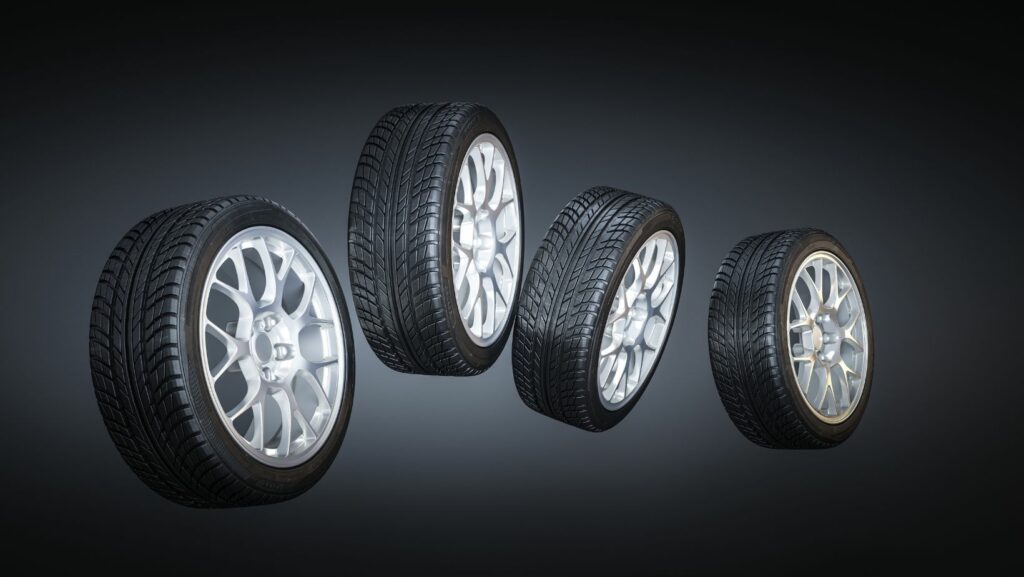Shipping wheels and tires isn’t as simple as throwing them in a box and sending them on their way. It requires careful planning and execution to ensure they arrive in the same condition they left. Whether you’re a car enthusiast trading parts or a business owner fulfilling orders, understanding the ins and outs of this process is crucial.
 In this article, we’ll delve into the step-by-step guide to shipping wheels and tires. We’ll cover everything from packaging to choosing the right shipping service.
In this article, we’ll delve into the step-by-step guide to shipping wheels and tires. We’ll cover everything from packaging to choosing the right shipping service.
So, if you’re looking to navigate this process with ease and confidence, you’re in the right place. Buckle up, as we steer you through the world of wheel and tire shipping.
How to Ship Wheels and Tires
In the realm of shipping, wheels and tires manifest unique challenges. This section dissects methods to pick suitable packaging materials and preparing the items for transportation.
Choosing the Right Packaging Materials
Appropriate packaging materials serve as a protective shield for wheels and tires. Their selection can be a complex process, but cardboard boxes offer a viable option due to their flexibility and strength. For instance, a 20x20x10 inch box can frequently accommodate a standard car tire. In addition, using bubble wrap adds an extra layer of cushioning, increasing the protection against knocks and drops during transit.
Preparing Wheels and Tires for Shipping
Prime preparation starts with cleaning. This ensures no foreign substances cause damage or complicate procedures during transit. Next, it’s time to package. If shipping tires with rim, make sure the rim side faces the same direction in the box, preventing accidental damage to delicate parts. Bubble wrap can be wrapped around items for added protection. Lastly, always seal with a strong adhesive packing tape to ensure longevity throughout the journey.
 In shipping, the main principle remains to leave no room for movement within the packaging container, as it aids in minimizing any chances of damage. As the journey begins, knowing that you’ve prepared the wheels and tires adequately provides peace of mind.
In shipping, the main principle remains to leave no room for movement within the packaging container, as it aids in minimizing any chances of damage. As the journey begins, knowing that you’ve prepared the wheels and tires adequately provides peace of mind.
Shipping wheels and tires might seem tasking, but with the right tools, materials, and methodology, it’s a simple process.
Packaging Techniques for Wheels and Tires
Effective packaging strongly impacts the safety of wheels and tires during transportation. This section offers practical methods to secure these items and keep them unscathed, as well as guidelines on appropriate labeling.
Securing Wheels and Keeping Them Safe During Transit
Securing wheels and tires properly in the package guarantees their safety. Firstly, one could consider wheel bags for enhanced protection. These bags, designed from sturdy material, offer cushioning and prevent scratches during transit. Next, it’s crucial to immobilize wheels and tires in the box. For this purpose, using inflatable packaging balloons or other padding materials helps as it fills empty spaces and restricts movement. Moreover, reinforcement inside the box, possibly with cardboard dividers, could create extra layers of protection.
In addition to these, a precautionary technique is to double-box wheels. This practice means packing the wheel in a box and then putting that box into another one with enough padding in between. By employing this, even if the outer box gets damaged, the inner box can provide an additional layer of protection.
Labeling Packages Correctly
 Correct labeling is a critical part of shipping wheels and tires. Each package must bear an easily visible and readable label. The label should contain specific information: the shipper’s full name, complete and correct address, zip code, and contact number. Similarly, the recipient’s identical details need to be provided.
Correct labeling is a critical part of shipping wheels and tires. Each package must bear an easily visible and readable label. The label should contain specific information: the shipper’s full name, complete and correct address, zip code, and contact number. Similarly, the recipient’s identical details need to be provided.
Furthermore, label placement holds significant importance. Rather than sticking it on corners or edges, placing it on a flat surface of the box minimizes the risk of it getting torn or lost in transit.
Finally, adding indications like “Fragile,” “Handle with Care,” or “This Side Up” on the packages alerts handlers, suggesting the necessity for careful handling. Writing these indications in bold, legible letters and displaying them prominently on more than one side of the box can help enforce proper handling throughout the delivery process.



